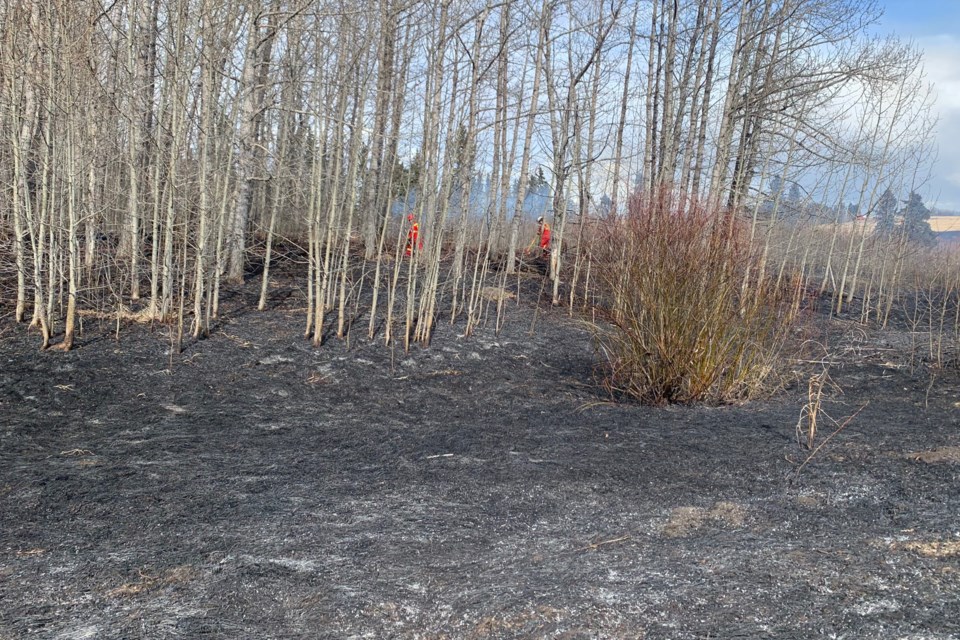SUNDRE — Strong winds recently rekindled a brush fire on a rural property southeast of town that had previously been assumed extinguished before the new year.
The Sundre Fire Department received the call on Tuesday, April 5 at 2:14 p.m. and responded to the scene, east of Highway 22 and south of the intersection with Highway 27, said the department's chief, Ross Clews.
“According to the landowner, he lit the brush pile in December and it really didn’t burn,” said Clews. “He thought it was out, and the wind picked up and obviously it was burning in the peat or whatever underneath of it, and the wind fanned it enough to start it again and take off.”
Clews estimated that about 150 acres of mostly grassland burned.
“It burned from the brush pile through the willows and all the bog marsh area up into some trees, and with the wind started taking off across the field,” he said.
The Sundre department deployed two units and requested mutual aid from the Olds Fire Department, which dispatched an additional three units, he said, adding crews were on the call for 413 minutes — or nearly seven hours — before reporting back to the hall ready for service at 9:07 p.m.
The flames spread quickly because of strong winds, and the chief said the blaze burned through about 15 acres in almost no time as though fuelled by an accelerant.
While not necessarily a frequent occurrence, brush piles left smouldering unbeknownst for months do sometimes rekindle back to life under the right conditions, he said.
“We’ve had at least two in the last year,” he said. “It all depends on where they burn the brush piles.”
Provided burn piles are placed on bare soil a distance away from potential sources of fuel like bushes and trees, the flames typically go out with the fire, he said.
“(But) if they’re in an area around the edge of the bush or in a lower area where there’s peat moss and dried out bog material, then it can smoulder in that for quite a while,” he said, adding that responding to out-of-control burn piles in such situations can be challenging as heavy equipment can’t safely be deployed in boggy or marshy ground.
Clews encourages landowners who some time over the winter conducted a controlled burn to consider checking up on the site to ensure the fire isn’t still smouldering in the ground, waiting for a gust of wind to spark back to life.
Whether campfires or controlled burns, the chief said people should thoroughly soak and stir the site or the pit until the ashes are cool to the touch. Burn piles should never be left unattended.
And while snow continues to melt, conditions are quickly getting dry.
“The ground is wet, but the grass is dry,” he said. “And the wind doesn’t help.”



